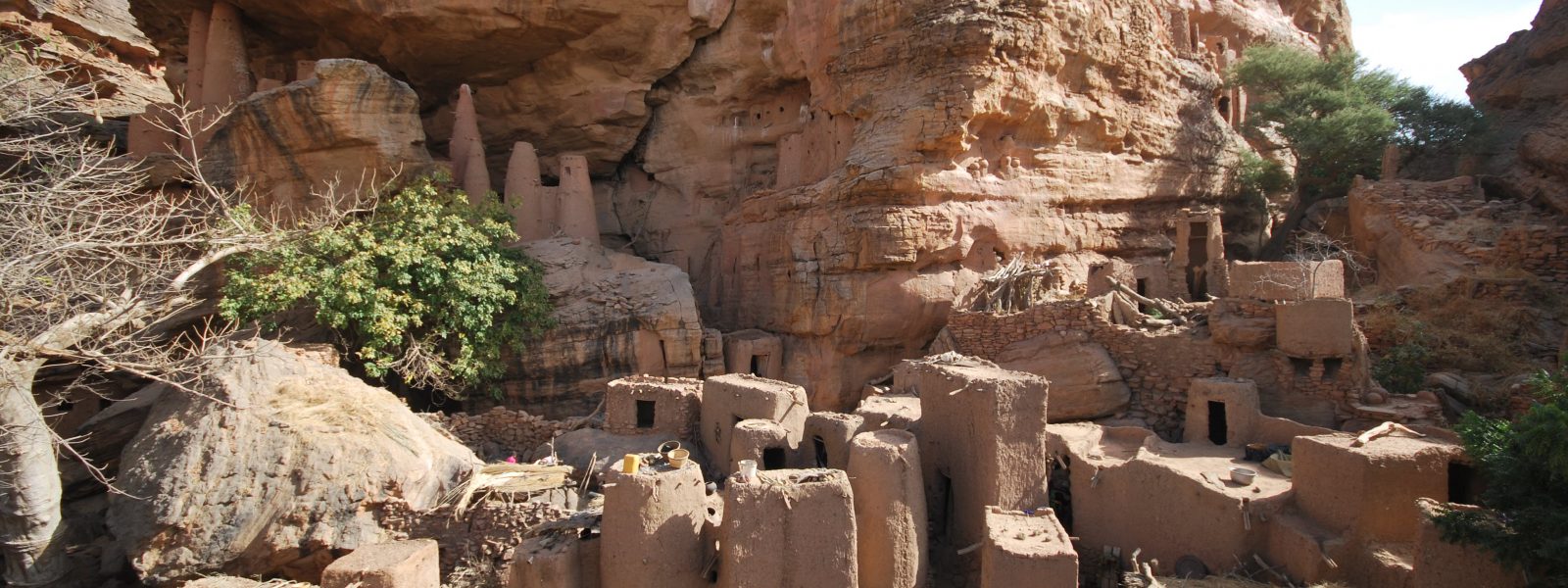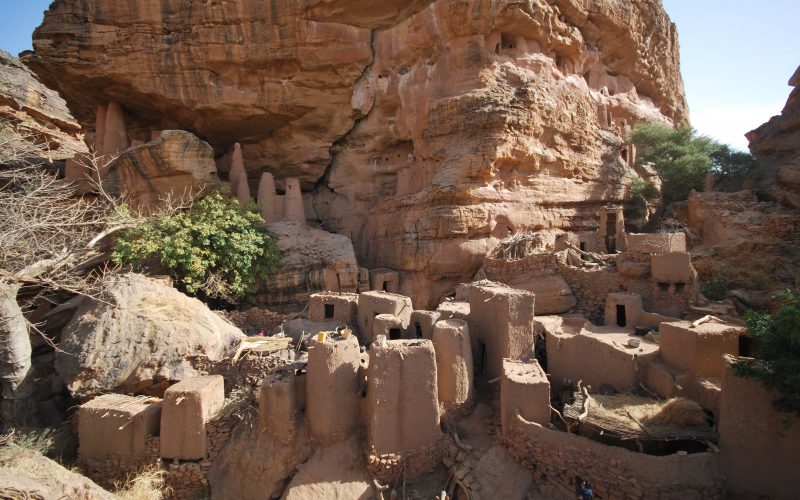The village of Yougo Dogourou is located on the top of an arid mountain, which stands separated from the Bandiagara Cliff. Yougo Dogourou has a special status for the animist rituals of the Dogon. In fact, it is the centre of the masks tradition and the starting point of all the important celebrations, like the Sigi every sixty years and the Dhama. All the funerals for the Hogons, the holy men in the Dogon society, are held in the village and they are buried in the highly located caves. Since the Dogon considered what was left by the Tellem as their own heritage, Tellem constructions and tombs have been incorporated in the village. Built on a high rock, the Tellem granaries comprehend a group of 30 clay buildings, which represent one of the cultural and spiritual symbols of the village.

In 2014 ADI executed a first restoration. This restoration included the reparation of the granaries, the reconstruction of completely demolished parts using photographs from 1980s to 2011 from the archive of professor Joop van Stigt (founder of the foundation Stichting Dogon Onderwijs), and the addition of a top clay plaster.

The complete work was done in accordance with ancient techniques, using traditional handmade bricks piled one upon the other with mud mortar. The banco used for the restoration is the same as the one that the Tellem used, since the Hogon de Dogourou indicated the area where to find it. Throughout the buildings are strategically placed wooden sticks that help to support and stabilize the structure. The exterior walls are covered with a top clay plaster with a special mixture of banco and scrapped stones.

It was a community project: during 105 days men were working on the site, while the women and children were in charge of the transportation of water, banco and stone. Despite the exceptionally difficult conditions, everybody did their best to contribute to the final success. The restoration plan ensured a process of participation, in which the local community was involved, enhancing its cohesion and strengthen its own identity. The transfer of traditional know-how from the older to the younger generation can be done successfully within the framework of a restoration site, which serves as a training opportunity.
The Mission Culturelle de Bandiagara visited the site in order to follow the progress of the work and to verify its accordance with UNESCO standards. Monitoring the state of condition of the restoration and emphasizing regular maintenance as a preventive measure of damage control, is still part of the management plan of the entire restoration.



